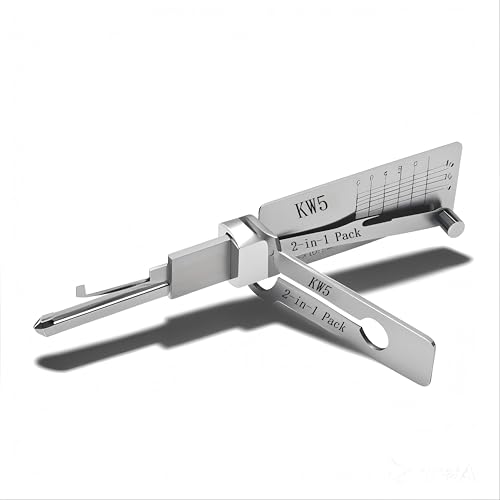Sewing a zipper by hand might seem daunting at first, but I’ve found it’s entirely achievable with a bit of patience and the right technique. Whether you’re updating an old jacket or crafting a custom dress, mastering this skill opens up a world of possibilities for your sewing projects.
In this guide, I’ll walk you through each step to ensure you can confidently tackle zipper installation without a sewing machine. From choosing the perfect zipper to securing it neatly in place, you’ll gain the confidence to handle this essential sewing task with ease.
Tools And Materials Needed
- Hand Sewing Needle: A sharp or ballpoint needle suitable for your fabric type.
- Thread: Polyester or cotton thread that matches your fabric color.
- Zipper: The appropriate length and type for your project.
- Fabric Pieces: The two sections of fabric where the zipper will be installed.
- Pins or Sewing Clips: To hold the zipper in place while sewing.
- Seam Ripper: For removing any mistakes during the process.
- Scissors: For cutting thread and fabric as needed.
- Thimble: To protect your finger when pushing the needle through thick layers.
Preparing The Fabric
I ensure the fabric is properly prepared before attaching the zipper. Proper preparation guarantees a seamless sewing experience.
Measuring And Marking
I handle measuring and marking meticulously:
- Measuring the Zipper Length: Determine the required zipper length by measuring the garment opening and adding a 1/4-inch seam allowance.
- Marking the Seam Lines: Use tailor’s chalk to draw straight lines parallel to the fabric edges, ensuring accurate placement.
- Aligning the Zipper Position: Position the zipper evenly along the marked lines to maintain balance and symmetry.
Attaching The Zipper
- Pinning the Zipper: Secure the zipper in place using pins or sewing clips, aligning the teeth with the fabric edges.
- Sewing the Zipper Tape: Use a backstitch to sew close to the zipper’s edge, maintaining consistent stitch length for durability.
- Reinforcing the Ends: Strengthen the start and end points of the zipper to prevent fraying and ensure longevity.
Hand Sewing The Zipper
Hand sewing the zipper ensures a secure and lasting attachment. I use precise techniques to achieve a neat and reliable finish.
Backstitch Method
I rely on the backstitch method for its durability and strength. Beginning a few stitches behind the zipper, I insert the needle through both fabric layers. Moving forward, each stitch locks the previous one, creating a solid seam. Ensuring consistent stitch length prevents gaps and maintains the zipper’s functionality.
Maintaining Even Tension
Maintaining even tension is essential for a smooth zipper operation. I pull the thread snugly without causing the fabric to pucker. Balancing the tension allows the zipper to glide effortlessly and enhances the overall appearance of the garment. Regularly checking the tension as I sew helps me achieve a professional and polished result.
Finishing Touches
After securing the zipper, finalize your project with these essential steps:
Trim Excess Threads
Cut any leftover thread close to the stitches using sharp scissors. Removing excess threads prevents snagging and ensures a neat appearance.
Secure Thread Ends
Use a knot or a small backstitch to lock the thread in place. This step reinforces the stitches, enhancing the zipper’s durability.
Press the Seam
Iron the zipper area on a low setting. Pressing smooths the fabric and sets the stitches, providing a professional finish.
Test the Zipper
Open and close the zipper several times to ensure smooth operation. Adjust any areas where the zipper catches or misaligns for optimal functionality.
Clean Up Marks
Erase any tailor’s chalk or markings with a fabric-safe remover. Removing these marks reveals the clean lines of your finished garment.
Reinforce if Necessary
If any sections feel weak, add a few extra stitches. Reinforcing these areas increases the strength and longevity of the zipper installation.

By completing these finishing touches, your hand-sewn zipper integrates seamlessly into your project, offering both functionality and a polished look.
Tips And Tricks
- Choose Quality Materials: Select durable zippers and matching thread to enhance the longevity of your project.
- Use a Thimble: Protect your fingers and apply consistent pressure when pushing the needle through the fabric.
- Mark Seam Lines Clearly: Utilize tailor’s chalk to ensure precise alignment and maintain symmetry throughout the sewing process.
- Maintain Even Tension: Control thread tension to prevent puckering, ensuring smooth zipper operation and a polished finish.
- Reinforce Zipper Ends: Stitch multiple times at both ends to prevent fraying and increase the zipper’s durability.
- Master Backstitching: Employ the backstitch technique for strong, secure seams that withstand regular use.
- Trim Excess Fabric: Remove unnecessary threads and fabric to achieve a clean, professional appearance.
- Test Zipper Functionality: Regularly check the zipper movement to identify and address any issues promptly.
- Secure Thread Ends: Knot or backstitch thread ends to prevent unraveling and maintain the integrity of your sewing work.
- Press Seams Properly: Use an iron to press seams flat, enhancing the overall look and ensuring the zipper sits correctly.
Conclusion
Hand-sewing a zipper really transforms how I approach my projects. There’s something special about completing each step and seeing the zipper come together perfectly. It’s a skill that not only adds functionality but also a personal touch to my creations. I find that with a bit of patience and practice, anyone can master it. Keep experimenting and enjoy the process of making your garments uniquely yours!

















